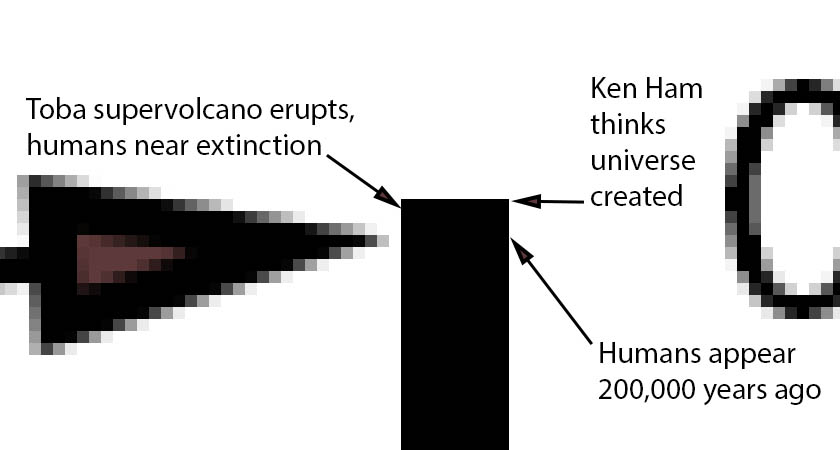
WEDNESDAY, AUGUST 19, 2015

Human Origins in Deep Time
It's a long way down
Eric Lee, A-SOCIATED PRESS
TOPICS: ORIGINS, FROM THE WIRES, GEOLOGICAL TIME
Abstract: The big picture view of the last 200,000 years, 0.2 million years of recent human history, is extended to look at the past 5,000 million years. The focus, however, remains on humans for some reason.
TUCSON (A-P) — Graphs can help improve our grasp of reality. The following graph looks at deep time from a human bias. Really deep time goes back 13.8 odd billion years ago when the universe popped into existence, possibly from nothing. Within a billion years stars and galaxies form. Many smaller galaxies merged into larger ones, forming spirals and spheres (elliptical galaxies). Often the merger was so violent that stars and gas collapse to form gigantic black holes. The gas flowing into these black holes became hot enough to glow brightly and appear as "quasars" that can be seen in the distant early 10 to 13 billion year old universe.
To begin at the end of time, the present moment 0 million years ago that slowly progresses into the future, we are living on Earth in an era dominated by human activities, likely to be called the Anthropocene. We are the ninth mass extinction event to occur on the planet which began with megafauna extinction. Hopefully the 9th one will not be the only thing we will be remembered for.
Each tick of the timeline covers 100,000,000 years. If you want to be impressed with how much time has passed on Earth, print this page. It will be about 38 feet long, wasting a bunch of paper and tape, so better not—just scroll down.

The first event there is room to show on this graph is the last event on the "Human Population Curve" graph, so together the two cover 5 billion years with a shameless focus on humans. The part of the line above the 200,000 year (0.2 mya) mark above, when modern humans have decided to call their ancestors "human," is three pixels high. The last pixel includes most of what is considered human history and prehistory worth noting.

Of course science and David Hume beg to note, "The life of man is of no greater importance to the universe than that of an oyster.” Earth is likely no more or less special than uncounted trillions of planets we know all but nothing of. Our Sun is certainly run of the mill and our galaxy is destined to become part of the larger Andromeda Galaxy. Few former Milkywayans will remember that their star was once part of a different galaxy.
